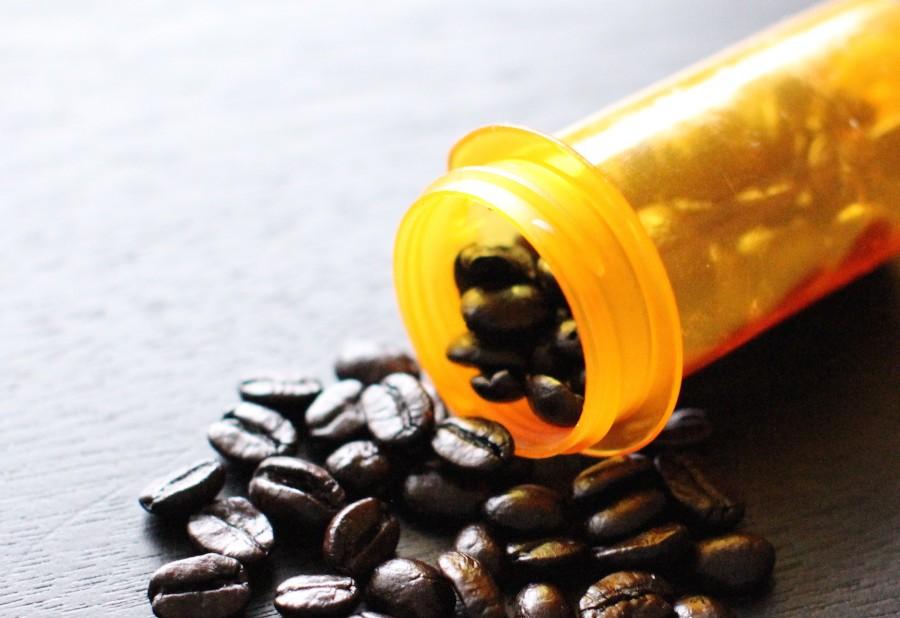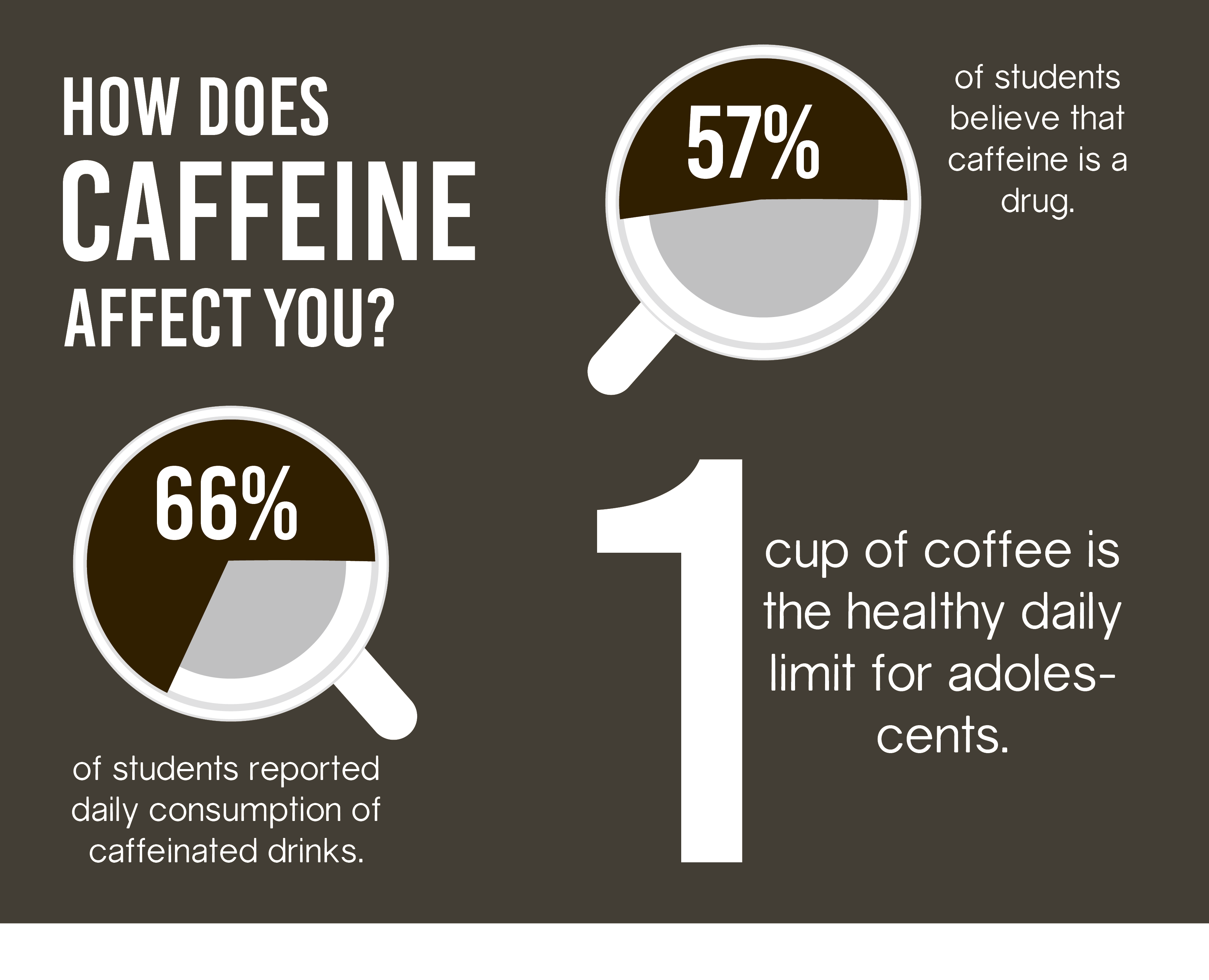We’re Wide Awake
West runs on caffeine, but how is it affecting us?
January 28, 2016
Whether it’s a cup of coffee in the morning, a can of soda with lunch or even just a piece of chocolate, most teenagers are regularly consuming some form of caffeine.
In a school survey, 65.9 percent of students reported daily consumption of caffeinated drinks. But consumption doesn’t represent the entire issue. The problem lies in the combination of consumption and ignorance. Only 32.6 percent of students claimed to know the safe amount of caffeine to consume in a day. According to the Mayo Clinic, up to 400 milligrams of caffeine is a safe amount for a healthy adult. However, the safe intake for adolescents is only 100 milligrams which is equivalent to one cup of coffee or two and a half cans of cola. This means that even two cups of coffee would be over the healthy limit for a teenager.
The same survey revealed that only 17.2 percent of students thought two cups of coffee in a day was too much.
“None of us think about the effect it has on the vascular system and the bloodstream and how that affects your heart and overall health,” psychology teacher Geneva Grogan said.
Caffeine is a stimulant, which means temporarily increases alertness, wakefulness and energy. However, this means that it also increases heart rate, respiration and blood pressure, which is why it could have adverse long term effects on the vascular system. Stimulants have been used to treat conditions such as asthma, but many recreational drugs also fall into this category. Nicotine, cocaine and meth are all classified as stimulants, or “uppers.”
As for caffeine itself, according to the National Council on Strength and Fitness, consumption in adolescents has increased by 70 percent since the 1980s.
“Coffee’s a lot more readily available; there are a lot more coffee shops now than there were than when I was in high school, and I drank more than my parents ever did. Long term consequences, you’re the generation that we’re going to see it in. So we don’t know what that will look like in the long run,” Grogan said.
While long term effects are yet to be determined, the short term effects of caffeine dependency can be seen any time a person who normally drinks caffeine takes a break from it.
“One of the big things about addiction is if you can function normally without it and if you’re suffering from withdrawal when you stop taking it,” Grogan said.
More than half of students who use caffeine reported that they experience sleepiness, headaches, irritability and trouble concentrating in the absence of caffeine. This indicates that many students could be at least mildly dependent on caffeine.
Sophomore Jane Doe could be one of these students. Doe has coffee every day.
“It depends how much I sleep that night, but I always have at least one cup of coffee,” Doe said.
Sometimes Doe extends her consumption into the school day.
“If I have hard classes towards the end of the day and I need to stay awake, I’ll have coffee at lunch,” Doe said.
However, Doe does not think of caffeine as a drug.
“I could stop drinking if I wanted to, I’d just be really tired. I just like to stay awake,” Doe said.
Doe’s view isn’t all that uncommon. While students are split pretty evenly on whether they consider caffeine a drug–57 percent do and 43 percent do not–the FDA classifies caffeine as a drug and food additive.
Junior Ellen Hancock has been drinking coffee since middle school, and thinks it has overall been a positive addition to her life.
“It keeps me awake, but it also keeps me focused,” Hancock said.
Hancock does try to keep her consumption at a reasonable amount.
“I like to stick to one or two cups a day, because that’s a pretty easy amount to have access to and it’s not a huge deal if I can’t have it,” Hancock said.
However, she has noticed some drawbacks.
“I get the jitteriness that people stereotypically associate with caffeine, so I have had some negative effects,” Hancock said.
This is also true when she avoids caffeine.
“I technically have a caffeine dependency, because when I don’t drink it I get a headache,” Hancock said.
Still, Hancock doesn’t think caffeine itself is a large scale issue for high schoolers.
“I don’t think caffeine specifically is the issue, but a lot of high schoolers drink sugary drinks like energy drinks. I think that’s a lot different than just drinking tea or black coffee,” Hancock said.
Sugar often does come hand in hand with caffeine. A can of Monster has 27 grams of sugar, but that pales in comparison to a 16 ounce caramel Frappucino, which has 64 grams.
Unlike other additives, caffeine is not directly represented on labels. Drinks such as Redbull or Coke clearly state caloric content but not caffeine concentration. Problems our society experiences with caffeine can no longer be attributed to the sources of caffeine, such as coffee and sugary beverages, but rather how misinformed people are about caffeine and its effects.
“The information is out there, but since for most people it’s not an immediate health risk and it doesn’t cause problems like meth and cocaine or other hardcore illegal drugs do, people don’t think it’s an issue.” Grogan said.




